
Buffaloberry Patch
View Wildlife From a Distance in Winter
Spring Light Goose Conservation Order
View Wildlife From a Distance in Winter
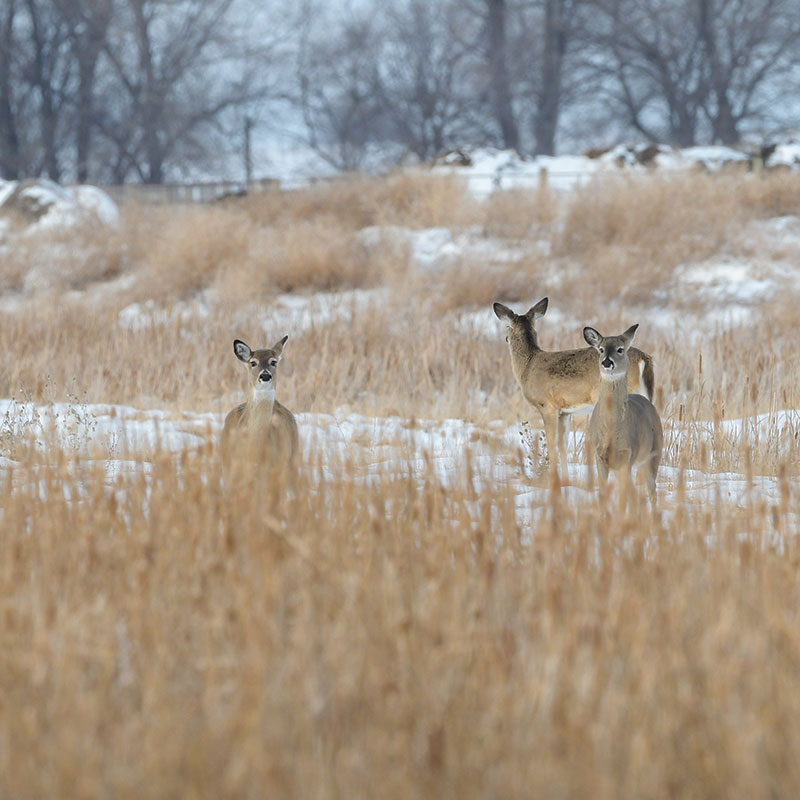
Wildlife managers urge outdoor enthusiasts to consider where they recreate during North Dakota’s leanest months to spare already stressed animals that are simply trying to survive the snow and cold.
This advice is especially true this winter as wildlife habitat and available food sources are limited because ongoing drought conditions leading up to winter nearly crippled the development of vegetation that many animals rely on to survive.
“People in North Dakota want to have fun in winter because we have four or five months of it, which means we've got a lot of people out shed hunting, riding snowmobiles and track machines, snowshoes, those kinds of things,” said Casey Anderson, North Dakota Game and Fish Department wildlife division chief. “It's important, the tougher the winter is, that people are cognizant about where wildlife are and really view wildlife from a distance.
“That means wait to shed hunt until later in the spring so that you're not pushing deer in and out of thermal cover where they're trying to just conserve energy,” he added. “You push them out into the open, then they get exposed to the elements a lot more and it adds further stress. Also, people need to realize if they’re out on a snowmobile or a machine and are pushing wildlife, chasing wildlife, that's actually an illegal activity in North Dakota as far as harassment of wildlife is concerned.”
Anderson said it’s common for snowmobilers and others to ride in areas where snow has accumulated, such as near shelterbelts and other wooded habitat.
“Those areas can be fun to ride because that's where the drifts are, but people also have to realize that there could be deer or other wildlife within those areas that are using that for thermal cover and a windbreak. And so, every time you push them out, it increases the amount of energy they expend to survive the next day.”
These same warnings, for shed hunters and others, also apply on Game and Fish Department owned or operated wildlife management areas where many animals gather to weather the winter months.
Fish Caught Deep
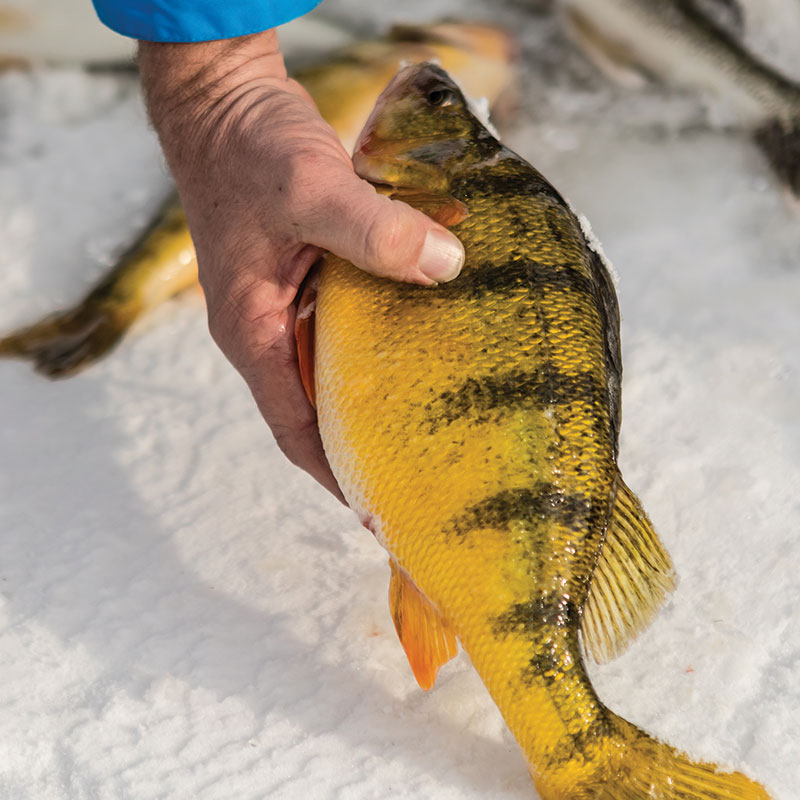
North Dakota Game and Fish Department fisheries biologists are encouraging ice anglers to keep fish caught from deep waters.
Catch-and-release fishing, no matter the time of year, is discouraged for fish caught in 30 feet or more, because fish reeled in from those depths have a greater chance of dying if released.
Fish caught in deep water won’t likely survive because of the extreme change in water pressure, which causes the swim bladder to expand. Fish can no longer control their balance in the water column when this happens. Other internal injuries, such as rupturing of organs and bleeding, are also likely for fish caught from deep waters.
Devils Lake ice anglers commonly catch yellow perch in 30-45 feet of water during the winter months. This also occurs to fish in other deep water bodies around the state.
Game and Fish recommends that anglers targeting fish in deeper water make the commitment to keep what they catch. And once they reach their limit, anglers should stop fishing at that depth to avoid killing more than their limit.
Spring Light Goose Conservation Order
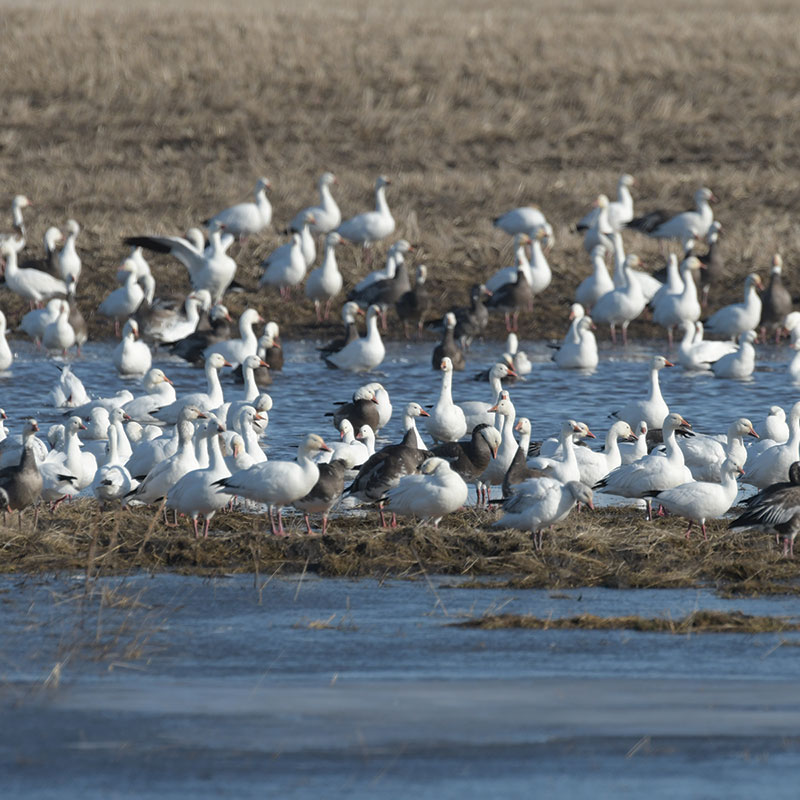
North Dakota’s spring light goose conservation order opens February 19 and continues through May 15.
Residents must have a valid current season 2021-22 (valid through March 31) or 2022-23 (required April 1) combination license; or a small game, and general game and habitat license.
Nonresidents need a 2022 spring light goose conservation order license. The cost is $50 and is valid statewide. Nonresidents who hunt in the spring remain eligible to buy a fall season license. The spring license does not count against the 14-day fall waterfowl hunting season regulation.
In addition, nonresident youth under age 16 can purchase a license at the resident fee if their state has youth reciprocity licensing with North Dakota.
A federal duck stamp is not required for either residents or nonresidents.
Resident and nonresident licenses are available online at the North Dakota Game and Fish Department website, gf.nd.gov.
Hunters must register annually with the Harvest Information Program prior to hunting in each state. The HIP number can be obtained online. The HIP number obtained for North Dakota’s spring conservation order is also valid for North Dakota’s fall hunting season.
The spring conservation order is only open to light geese – snows, blues, and Ross’s. Species identification is important because white-fronted and Canada geese travel with light geese. The conservation order is closed to whitefronts, Canada geese, swans and all other migratory birds.
Ice Fishing Reminder
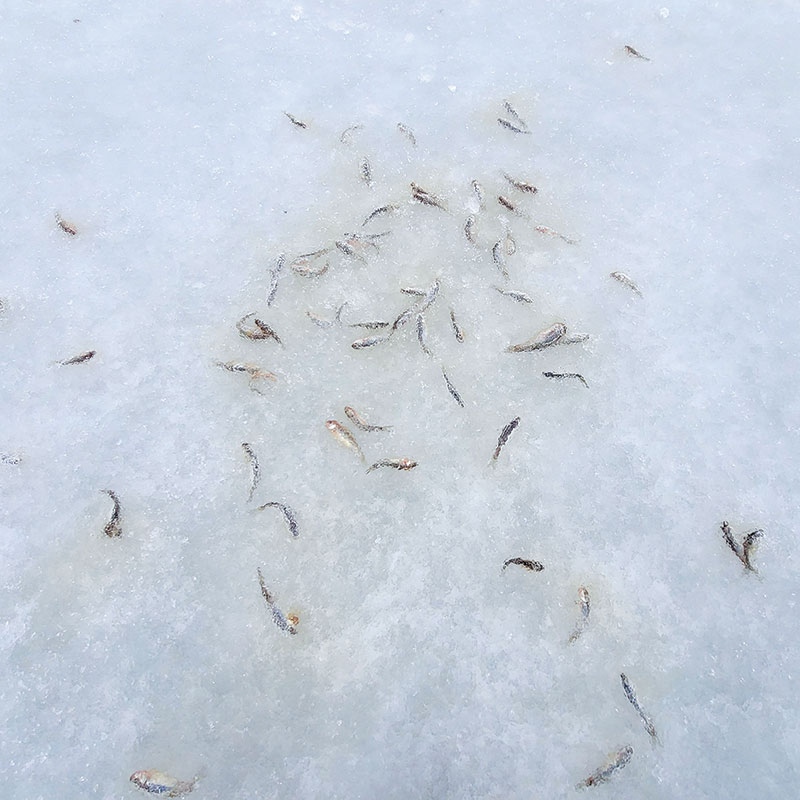
Winter anglers must clean up the ice after fishing. This not only applies to trash, but fish as well.
It is not only unsightly, but it is illegal to leave fish, including minnows used for bait, behind on the ice. According to state fishing regulations, when a fish is caught, anglers must either immediately release the fish unharmed, or reduce them to their daily possession.
It is common practice for some anglers to fillet fish on the ice, which is allowed, as long as fish entrails and other parts are removed from the ice and properly disposed of at home.
In addition, all trash, including aluminum cans, cigarette butts and Styrofoam containers, must be packed out and taken home.
Hunter Education Classes
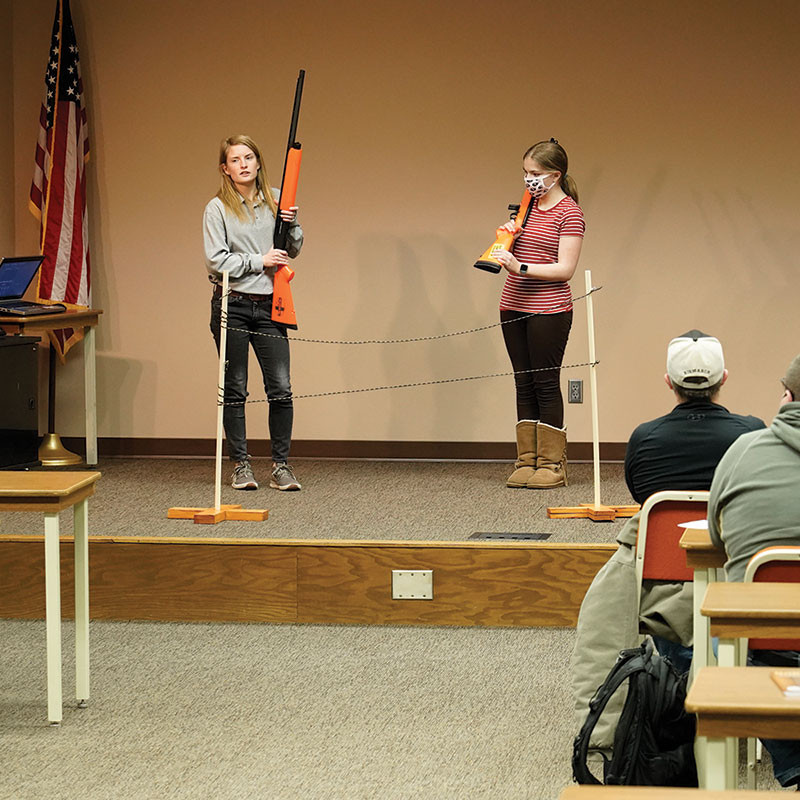
If you were born after 1961, are 12 years or older, you must take a certified hunter education course before you can get a firearm or bowhunting license in North Dakota.
Understanding this, especially if you have your sights set on hunting in fall, now is not the time to drag your feet.
“In some of our communities, especially our smaller communities, there's only one course a year, so if you need to meet that hunter education requirement, people need to be thinking about it now as the vast majority of our courses are from January through May,” said Brian Schaffer, North Dakota Game and Fish Department hunter education coordinator. “We've been working on providing more volunteer-led courses throughout the summer months, but calling the Department in August to get certified before our hunting seasons beginning in early fall likely won’t work. And when that class disappears off the Game and Fish website, it means it's full, so there needs to be some personal responsibility here.”
Individuals interested in taking a hunter education class in 2022 must click on the education link at the North Dakota Game and Fish Department website, gf.nd.gov. To register for a class, click on “enroll” next to the specific class, and follow the simple instructions. Personal information is required. Classes are listed by city and can also be sorted by start date. Classes will be added throughout the year as they become finalized.
Individuals interested in receiving a notice by email or SMS text message when each hunter education class is added, can click on the “subscribe to news and alerts” link found below the news section on the Game and Fish home page. Check the box labeled “hunter education” under the education program updates.
Again, state law requires anyone born after Dec. 31, 1961, to pass a certified hunter education course to hunt in the state. Children must be turning 12 during the calendar year to take the home study course, and age 11 during the calendar year can take the traditional in-person class.
Hunter education got its start in North Dakota more than 40 years ago, and the program is approaching a significant signpost, especially when you consider the effort to certify thousands of students has long been led by giving volunteers.
“In the next couple of years, we're going to hit 250,000 students that have successfully completed hunter education in North Dakota,” Schaffer said. “It's a milestone that all of our volunteers, our agency and anyone who's ever been part of hunter education should be proud of. It shows a collaborative effort to make North Dakota hunting safer and not just for hunters, but for the landowners and for the citizens of North Dakota who we've been teaching for over 40 years what we think is important for our hunters to know before they ever step foot in a field in North Dakota.”
Typically, about 5,000 students take and pass hunter education in North Dakota every year.
“The demographics of our hunter education courses have changed drastically over the last 10-20 years. Historically, our hunter education classes in the 1980s and1990s consisted of mostly our children, and the vast majority of them were male students,” Schaffer said. “That shifted quite a bit and now it's almost a 50-to-50 ratio of male to female. And we're also seeing a lot of young adults taking hunter education, people who didn't grow up in a hunting family or for whatever reason, they didn't take hunter ed as a child, we're seeing more and more adults taking hunter education.”
What hasn’t changed is that the program leans heavily on the selfless individuals who teach the classes across North Dakota.
“We have roughly 700 volunteers who teach hunter education in a given year, and some of those people have been teaching for 30 and 40 years,” Schaffer said. “We also have people who are only a year or two into it. And so, if you have any interest in helping out, there's a variety of ways we can get you involved in the hunter education program. It's a way to give back to your community and give back to our hunting heritage here in North Dakota.”
Midwinter Waterfowl Survey
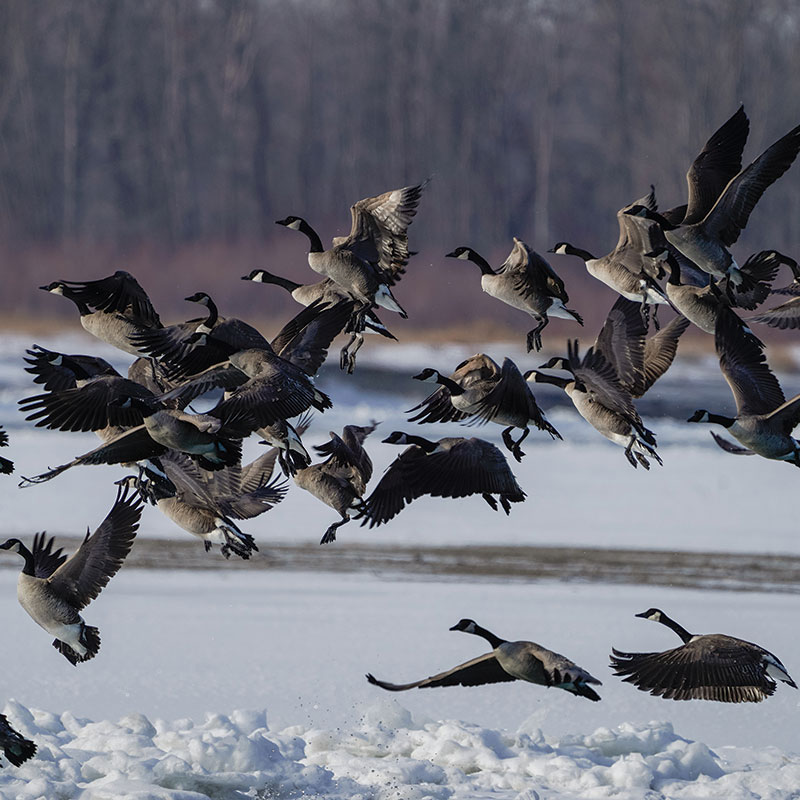
The North Dakota Game and Fish Department’s annual midwinter waterfowl survey in early January indicated about 81,000 Canada geese in the state.
Andy Dinges, Department migratory game bird biologist, said that number likely would have been higher, but snow and bitterly cold weather in late December undoubtedly pushed some birds south just prior to the survey.
“The number of waterfowl recorded dropped substantially from last year’s survey, but that was a relatively mild winter with little snow accumulation,” Dinges said.
In addition, Lake Sakakawea didn’t officially freeze over until Jan. 24 last year, which was the latest date on record.
“Despite recent weather we are still wintering a good number of waterfowl this year and conditions remain fair for wintering birds, unless we get too much snow accumulation,” Dinges said.
During the survey, an estimated 55,000 Canada geese were observed on the Missouri River, and another 21,100 on Nelson Lake in Oliver County. Dinges said after summarizing the numbers, an additional 7,000 mallards were tallied statewide, most of which were recorded on Nelson Lake. Lake Sakakawea officially froze over just a few days before the survey this year.
The 10-year average (2012-21) for the midwinter survey in North Dakota is 123,100 Canada geese and 24,700 mallards.
All states participate in the midwinter survey during the same time frame, to reduce the possibility of counting birds more than once.
Participation Needed in Hunter Harvest Surveys
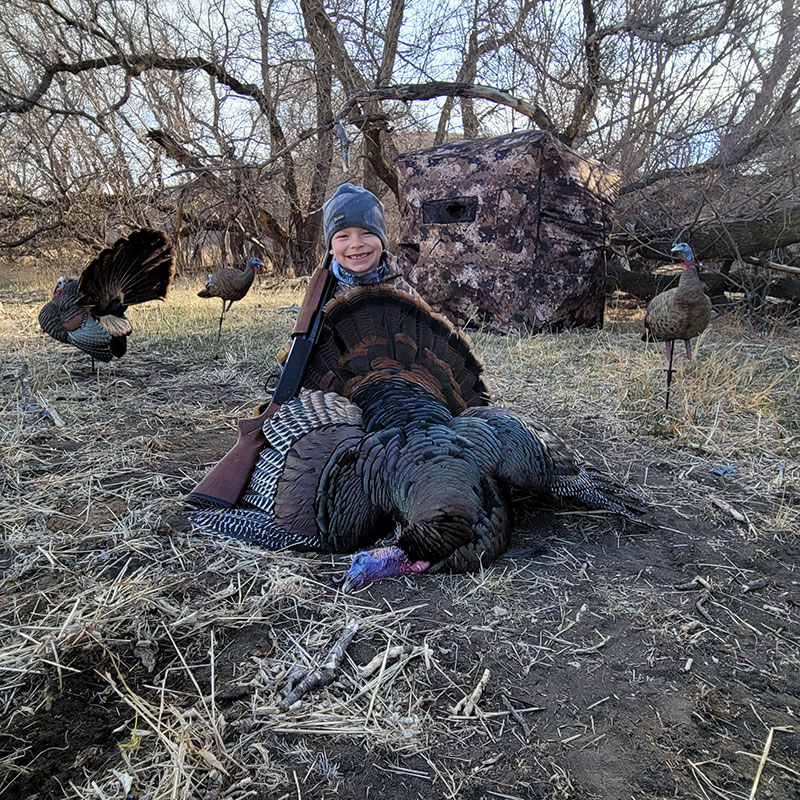
Even though North Dakota’s 2021 hunting seasons have been put to bed, hunter success, or lack thereof, still matters.
The North Dakota Game and Fish Department has conducted hunter harvest surveys for more than a half-century, using the findings to help manage the state’s wildlife populations. Thousands of surveys are sent annually, and participation is strongly urged because hunter harvest plays a noted role, for example, in setting hunting license numbers for the upcoming season.
“We survey hunters about their hunting activity because understanding how many animals were removed from the population is a really important ecological piece of information,” said Chad Parent, Department survey coordinator. “We use that information that we get back from the hunter harvest surveys to compare against where we're at with our harvest objectives at any point in a given year. And that can mean, in some cases, license increases. It can sometimes mean that we decrease the number of licenses, potentially in the case of a site that was hit hard by EHD, for example. But ultimately these surveys are important because they inform the recommendations that we pass along to the governor during the proclamation setting process.”
Thousands of big game, small game, waterfowl, swan, turkey and furbearer questionnaires will be emailed to randomly selected hunters. A follow-up survey will be mailed to those who did not respond to the first survey.
Not everyone who, say, receives a hunter harvest survey for the 2021 deer gun season will have harvested a deer, but Parent stressed that those hunters still need to fill out and return their surveys.
“We design our surveys so that a random sample of hunters get those surveys, and we understand that some hunters weren’t successful, which in a lot of ways is just as important as knowing who did harvest a deer,” he said.
Parent said the hunter harvest surveys are short and take very little time to complete. He added that a follow-up survey will be mailed to those who did not respond to the emailed survey.
“The more surveys we get back from hunters, the more robust the statistical information is to help us produce better harvest estimates,” Parent said. “I equate the hunter harvest surveys to the work we do at Game and Fish. We fly aerial surveys to count deer and we drive roadside surveys to count upland game birds. The more time biologists spend in airplanes or driving North Dakota backroads, the better the estimates we get back. And it's the exact same concept for hunter harvest surveys.”
Big Three Lottery
Elk, moose and bighorn sheep applications must be submitted online before midnight March 23.
To apply online, visit the Game and Fish website, gf.nd.gov. Paper applications are not available.
Hunters who have received a license through the lottery in the past are not eligible to apply for that species again.
In 2021, 26,032 people applied for the 470 moose licenses; 23,023 applied for the 519 elk licenses; and 19,126 applied for the four bighorn sheep licenses.
Staff Notes
Wes Erdle Named Game and Fish Employee of the Year

Wes Erdle, fisheries development project manager for the North Dakota Game and Fish Department in Bismarck, received the agency’s Director’s Award for professional excellence at the Department’s annual staff meeting in December.
Jeb Williams, Game and Fish director, said Erdle and his crew are responsible for all new boat ramps undertaken by the Department, and he is solely responsible for coordination and management of development staff, contractors, entities and landowners.
“The amount of planning and prioritizing to make the development program effective is enormous,” Williams said. “Wes serves as the engineer, foreman and lead equipment operator. He is extremely motivated, ambitious and hard-working, and we are fortunate to have him working on our team.”

Todd Caspers, fisheries biologist, Devils Lake, was recognized for his efforts in the fisheries management of Devils Lake, Stump Lake, Lake Irvine and the Red River.

Corey Wentland, federal aid manager, Bismarck, was recognized for his involvement with state and federal audits, and his management and compliance with federal grants.

Todd Buckley, wildlife resource management biologist, Williston, was recognized for being instrumental in increasing grazing as a management tool for habitat treatments on wildlife management areas.

Robert Miller, wildlife technician, Riverdale, was recognized for his efforts in coordinating upgrades in facilities at the Riverdale office complex.

Wildlife resource management supervisor Brian Prince (left), private land biologist Andrew Ahrens (middle) and wildlife technician Scott Olson (right), all Devils Lake, were recognized for their efforts managing aspen forests on public and private lands.
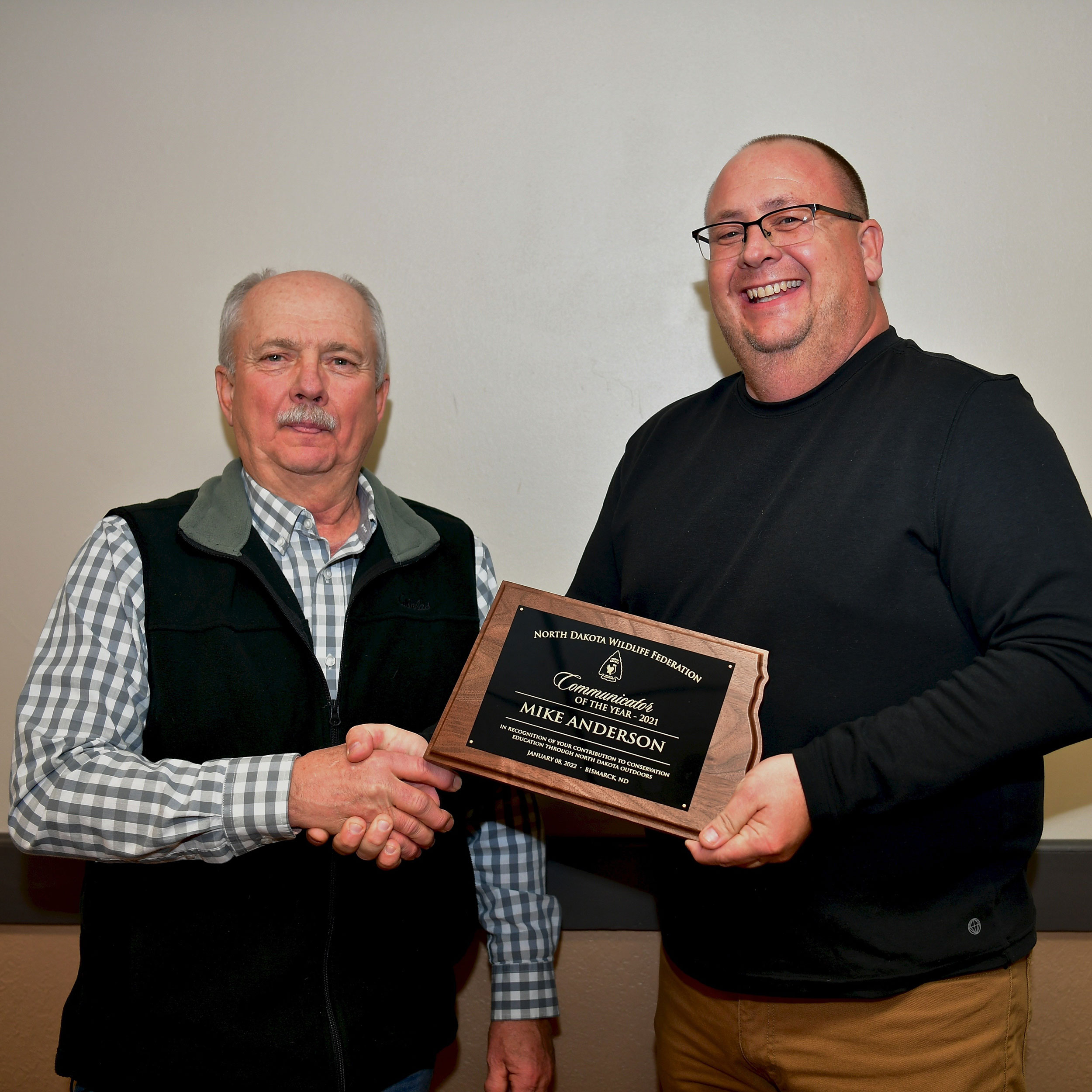
Communicator of the Year
Mike Anderson, North Dakota Game and Fish Department video project supervisor, received the North Dakota Wildlife Federation Communicator of the Year Award in January. Anderson was nominated for the award by the Lewis and Clark Wildlife Club.
“Anderson has brought videography, reporting and information distribution of current wildlife and fisheries news to a new level at the North Dakota Game and Fish Department,” according to the nomination letter. “His timely reporting provides hunters, anglers and the general public pertinent and current information on North Dakota’s wildlife and fish resources.”
Anderson’s work today airs on 11 television stations in North Dakota and on the Department’s website (gf.nd.gov) and Facebook page.

Department Weed Warriors
Bill Haase, North Dakota Game and Fish Department assistant wildlife division chief, and agency wildlife technicians, Tom Crutchfield and Jim Houston, were awarded the Weed Warrior Award from the North Dakota Weed Control Association in January.
The trio’s efforts were commended for expanding prescribed grazing on Department wildlife management areas, to get desired vegetation response and increase grass production, and annual and perennial wildflowers and forbs.
The use of livestock and temporary rotational grazing produces a healthier grassland community and increases plant diversity while using cattle to put pressure on noxious weeds, reducing the need for a significant amount of chemical control and provide healthy grasslands.
The crew invested a significant amount of time and money to develop grazing systems. They coordinated grazing systems, drilled electric and solar wells, obtained easement for electricity, and installed temporary and permanent fencing to provide for grazing rotations. Because of this success, other districts have also expanded grazing opportunities as well.
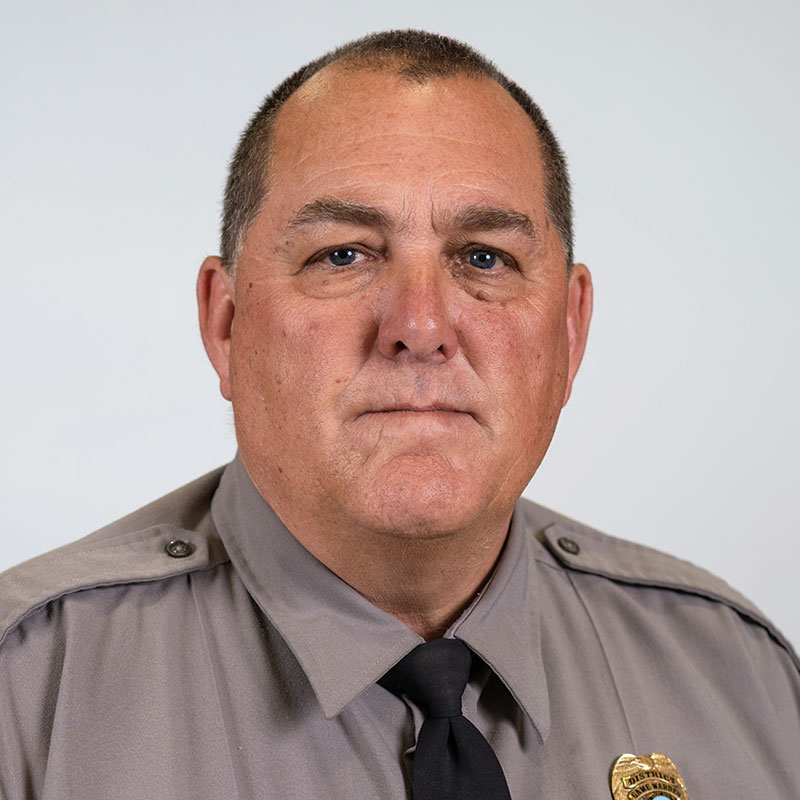
Phalen Retires
Tim Phalen retired in December after 37 years with the Game and Fish Department. Phalen joined the agency in 1984 as a wildlife technician and started as a district game warden in 1987 in the Wyndmere district where he remained his entire enforcement career. Over the years, Phalen acted as a Department field training officer and firearms instructor.
“Tim retires with a wealth of enforcement experience and a deep understanding of the district he patrolled for so many years,” said Scott Winkelman, Department enforcement division chief. “Tim will be missed.”

Ressler New Marketing Specialist in Bismarck
Jackie Ressler has been named the Game and Fish Department’s marketing specialist in Bismarck.
Prior to accepting the position, Ressler gained nearly 20 years of experience working in the marketing and advertising industry in Bismarck.
